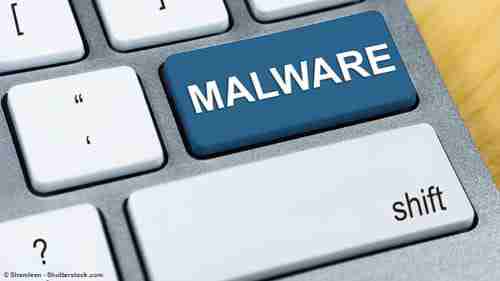
Malware is a common problem on all computers. Infecting a PC with malicious software can slow down and impair computer performance in many ways. Fortunately, there are simple ways to minimize the risk of getting infected at all but also to remove these programs once they have entered your computer. In this article we explain what malware is and how to combat it.
What is Malware
Malware can be any program that is introduced to your computer or other device with harmful intentions. These software programs use the PC for their own purposes, harming the operating system of the device in multiple ways. Some of the damage can be done by spying on or stealing data, hijacking the functions of the device, introducing invasive advertising and many other annoying or dangerous activities.
Although we often talk about malware and viruses indistinctly, the latter is only one type of malware, which is a more generic term and includes multiple types of cyber-threats, such as ransomware, spyware, adware, etc.
How to Find Out if Your Computer is Infected With Malware
If you're not an IT expert, you might not know for sure if your computer is infected, but there are signs that generally indicate the presence of malicious software. Some of these include:
Your PC running slower than usual, both when surfing the Internet and when using other functions.
than usual, both when surfing the Internet and when using other functions. Your hard drive has inexplicably much less space available .
. The fan is running at full speed, a sign of abnormal use of system resources.
New tools or extensions appear in your browser that you have not downloaded
in your browser that you have not downloaded A multitude of pop-up advertising windows (adware) appear as you browse. Some of these ads offer free services or products and hide other viruses.
windows (adware) appear as you browse. Some of these ads offer free services or products and hide other viruses. Your computer starts to crash regularly or you get the dreaded blue screen that shows the Windows logo as a result of a serious malfunction.
regularly or you get the dreaded blue screen that shows the Windows logo as a result of a serious malfunction. A message appears on screen that your computer has been 'hijacked' and asks for a monetary payment in exchange for control of your computer or files (ransomware).
NOTE: In some cases, continuous errors or slowdown of your equipment may have other causes. In the following section, we will explain what actions you can take to make your PC work at full capacity.
How to Remove Malware
Here are some tips to minimize the risk of malware infection:
Update your computer frequently
Hackers generally take advantage of computers via their operating system vulnerabilities. It is therefore highly recommended that you keep your system and programs updated therefore protecting your computer from any holes in your security.
Back up Your Data
Make a habit of backing up your files. Although this won't protect you from malware attacks, it will prevent any vulnerability in the event of a ransom attack, as your data will be safe.
Use Secure Passwords
Today there are multiple password managers, including one by Google. We recommend using complex passwords, changing them frequently and to avoid using the same one for all your accounts. In the even of an attack, you want to avoid a hacker gaining access to all accounts by discovering one simple password.
Install Anti-Malware
There are currently many free anti-malware and anti-virus programs: choose one, activate it and make sure it is always up to date. This will prevent most threats. It is worth noting that one is enough. Having numerous anti-virus programs is not only unnecessary but could also be counterproductive, as they can neutralize each other making your computer more vulnerable instead of more secure.
The Best Free Anti-Malware
Avast
Avast is probably one of the safest and most recognized anti-malwares in the world because of its reliability and simple, intuitive interface. The free version blocks multiple types of malware and it can also analyze the weak points in the security of your wifi connection. You can download it here.
Bitdefender
Bitdefender is a very fast, light and effective anti-malware software. It works well with computers without using much power and the free version for Windows includes real-time protection, anti-phishing, anti-fraud and web protection. Download it here.
eScan
The free eScan Anti-Virus Toolkit version cleans your PC from viruses and other malware running in the background without disturbing your work. It uses a Kaspersky scanning engine, which makes it very reliable. You can find it using this link.
Panda
The free version of this popular antivirus detects numerous types of malware in real time. It is also capable of scanning USB sticks for viruses and has a game mode to avoid disturbing notifications when you are in the middle of a game. Download Panda for free here.
Windows Defender
Windows Defender is the recommended anti-malware for Windows 10. It is an effective program that is constantly updated, contains no ads unlike the free version of other antivirus software and has the advantage of being backed by Microsoft. According to AV-TEST (the independent institute for cyber security), it is currently one of the safest free antivirus programs. It is simple to use and quite powerful with functions ranging from application scanning, automatic sample sending to detect threats, and anti-ransomware tools. This is the official page.
Malwarebytes Anti-Malware
This program is intended to be used as a compliment to other antivirus programs, as it does not protect against malware itself, but cleans the PC once it has been infected. It does an excellent job in that respect, as its high score in numerous rankings proves. You can download Malwarebytes Anti-Malware here.
Image: © Pixabay.